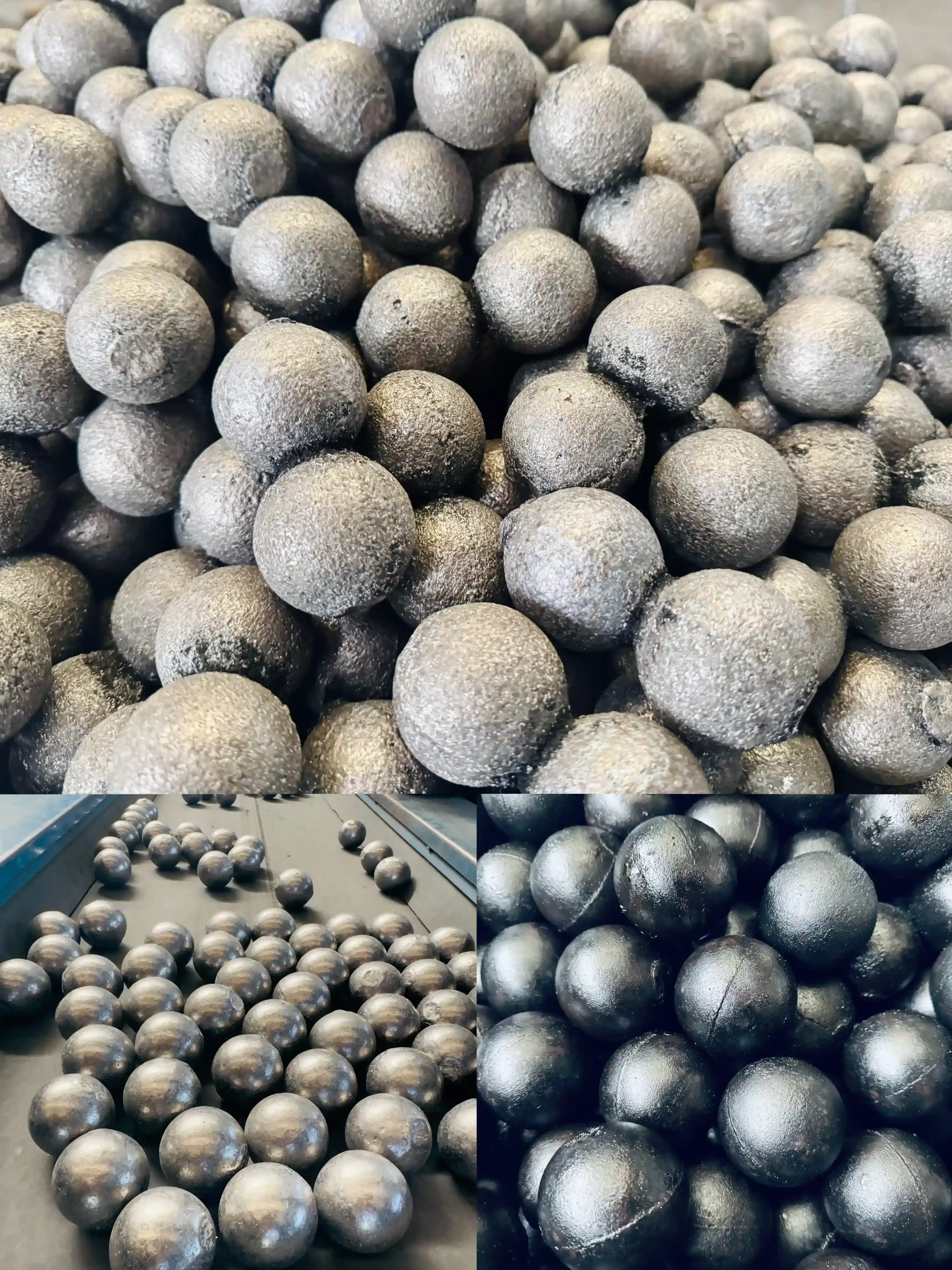In the realm of modern manufacturing, milling balls play a pivotal role in various industrial processes. These small yet mighty spheres are the unsung heroes behind the production of countless everyday items, from the cement in our buildings to the minerals in our electronics. As we delve into the world of milling balls, we'll explore their key roles, compare different types, and peek into the future of this essential manufacturing component.

Key Roles of Milling Balls in Industrial Manufacturing
Milling balls are the workhorses of many industrial grinding processes. Their primary function is to break down materials into finer particles, a process crucial in numerous sectors. In the mining industry, milling balls are indispensable for crushing ore and extracting valuable minerals. The cement industry relies heavily on these spheres to grind clinker into the fine powder that becomes cement.
Beyond these traditional uses, milling balls have found their way into more specialized applications. In the pharmaceutical industry, they're used to create ultra-fine powders for medications, ensuring better absorption and efficacy. The ceramics industry utilizes them to achieve the perfect consistency for their materials, while the paint industry depends on milling balls for pigment dispersion.
The versatility of milling balls is due to their ability to provide both impact and friction grinding. As the mill rotates, the balls cascade, creating a grinding action that can be fine-tuned by adjusting factors such as ball size, material, and mill speed. This adaptability makes milling balls a crucial tool in achieving precise particle sizes across various industries.
Comparing Milling Balls: Steel vs. Ceramic
When it comes to choosing the right milling balls for a specific application, manufacturers often find themselves deciding between steel and ceramic options. Both materials have their strengths and ideal use cases, making the choice dependent on the specific requirements of the grinding process.
Steel milling balls are the traditional choice and remain popular due to their durability and cost-effectiveness. They're particularly well-suited for heavy-duty applications where high impact strength is necessary. Steel balls excel in grinding hard materials like ores and clinker, making them a staple in mining and cement production. Their high density allows for efficient energy transfer during the milling process, resulting in faster grinding times.
However, steel balls are not without their drawbacks. They can introduce metal contamination into the ground material, which can be problematic in industries requiring high purity, such as pharmaceuticals or advanced ceramics. Additionally, steel balls are prone to wear over time, necessitating regular replacement.
Ceramic milling balls, on the other hand, offer a different set of advantages. Made from materials like alumina or zirconia, these balls are prized for their exceptional hardness and wear resistance. This translates to a longer lifespan and reduced contamination of the ground material. Ceramic balls are the go-to choice for applications where product purity is paramount, such as in the production of electronic components or high-quality pigments.
The lower density of ceramic balls compared to steel can be both an advantage and a disadvantage. While it may result in slower grinding times for some applications, it also means less wear on the mill itself and potentially lower energy consumption. Ceramic balls also offer superior performance in wet grinding applications, where their chemical inertness prevents unwanted reactions.
Ultimately, the choice between steel and ceramic milling balls depends on a careful consideration of factors including the material being ground, the desired particle size, contamination concerns, and operational costs. Many manufacturers opt for a hybrid approach, using a combination of steel and ceramic balls to leverage the benefits of both materials.
Future Trends in Milling Ball Manufacturing
The field of milling ball manufacturing is not static; it's evolving to meet the changing demands of modern industry. Several trends are shaping the future of these crucial components:
1. Advanced Materials: Research is ongoing into new materials for milling balls that can offer improved performance characteristics. For instance, some manufacturers are exploring the use of nano-structured materials to create balls with enhanced hardness and wear resistance.
2. Customization: As industries require increasingly specific particle sizes and distributions, there's a growing trend towards customized milling balls. This includes not just size and material customization, but also surface treatments to optimize grinding performance for specific applications.
3. Sustainability: With growing environmental concerns, manufacturers are looking for ways to make the milling process more sustainable. This includes developing milling balls that require less energy to produce and use, as well as exploring recycling options for worn-out balls.
4. Smart Manufacturing: The integration of IoT (Internet of Things) technology into milling processes is opening up new possibilities. Smart sensors can monitor the wear of milling balls in real-time, allowing for predictive maintenance and optimized replacement schedules.
5. Hybrid Solutions: As mentioned earlier, the trend of using hybrid solutions combining different types of milling balls is likely to continue and evolve. This approach allows manufacturers to fine-tune their grinding processes for optimal efficiency and product quality.
The future of milling ball manufacturing is intrinsically tied to the broader trends in industrial manufacturing. As industries push for greater efficiency, precision, and sustainability, milling ball manufacturers will need to innovate to meet these evolving needs.
In conclusion, milling balls remain a critical component in modern manufacturing, with their importance only set to grow as industries demand ever-finer and more precisely sized materials. From the traditional steel balls crushing ore in mines to advanced ceramic balls ensuring the purity of pharmaceutical powders, these humble spheres play a vital role in shaping our material world.
As we look to the future, it's clear that the field of milling ball manufacturing will continue to evolve, driven by technological advancements and changing industrial needs. Whether it's through the development of new materials, the integration of smart technologies, or a renewed focus on sustainability, the humble milling ball will undoubtedly continue to play a crucial role in shaping the future of manufacturing.
If you're interested in learning more about our high-quality milling balls and how they can optimize your manufacturing processes, we invite you to get in touch. Our team of experts is ready to help you find the perfect solution for your specific needs. Contact us at sales@da-yang.com or sunny@da-yang.com to discuss how our milling balls can elevate your manufacturing capabilities.
References
- Johnson, R. (2023). The Evolution of Milling Balls in Modern Manufacturing. Industrial Engineering Quarterly, 45(2), 78-92.
- Smith, A. & Brown, B. (2022). Comparative Analysis of Steel and Ceramic Milling Balls in Industrial Applications. Journal of Materials Processing Technology, 300, 117345.
- Lee, C. et al. (2024). Future Trends in Grinding Media: Innovations and Challenges. Advanced Materials Processing, 12(4), 456-470.
- Zhang, X. (2023). Sustainable Practices in Milling Ball Manufacturing: A Review. Green Manufacturing and Design, 8(3), 234-249.
- Anderson, P. & Taylor, S. (2022). The Impact of Milling Ball Selection on Product Quality in Pharmaceutical Manufacturing. International Journal of Pharmaceutics, 615, 121501.
- Garcia, M. et al. (2024). Smart Manufacturing Technologies in Milling Processes: Opportunities and Implementation Challenges. Journal of Intelligent Manufacturing, 35(2), 789-805.








